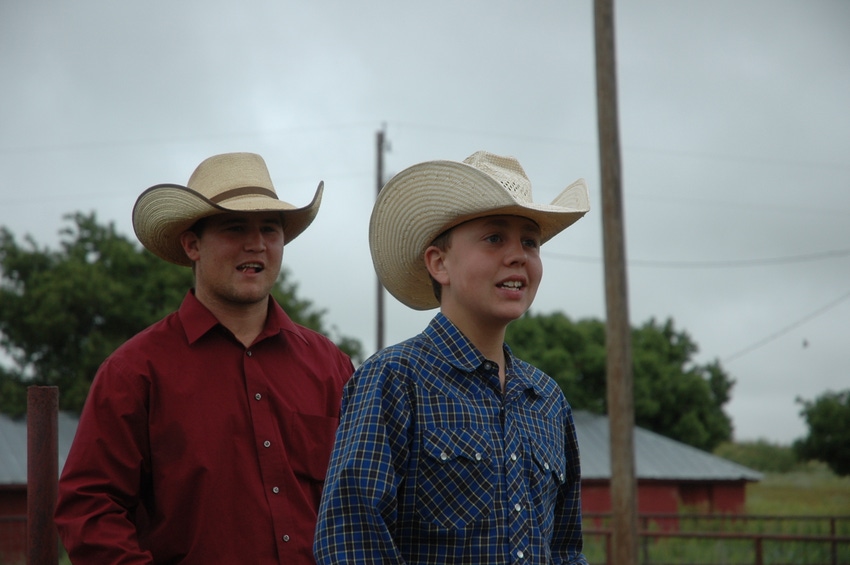The new five-year plan builds on previous efforts but gives beef producers even more areas of focus.

For those of us who report on and discuss things important to the beef business, the beef industry Summer Meeting was a target-rich environment. Truly, in just two days, the 600 or so folks who showed up got down to work in short order and got a remarkable amount of work done and decisions made.
We’ll have more reports from the meeting as time goes on. Today, however, let’s look at the industry’s new five-year Long Range Plan, which was rolled out at the meeting.
It’s new, however, only in the sense that it’s the latest in a long line of such efforts. The first industry Long Range Plan was initiated in 1995 and every one since then has built on the last as it helped the beef business focus on the things most important for producers to be successful.
Click here to read the new Long Range Plan
Most importantly, however, is that the organizations that fund the planning effort—NCBA and the Cattlemen’s Beef Board—take it seriously, says Kim Brackett, chair of the Long Range Plan Task Force and Idaho cow-calf producer. Rather than put it on a shelf to gather dust, the leadership and staff of those outfits integrate the plan into their work.
“On the checkoff side, they use this plan for the entire checkoff program,” she told me. “All of their plan of work is based against and measured against the Long Range Plan. On the NCBA side, I know they’re excited to see a few strategies in here that are a little more policy oriented this time around.”
The 2021-2025 plan is very similar to the previous plan in many respects, but the current plan is even more comprehensive and in-depth. “We have six core strategies in the new plan and there were four in the previous plan,” Brackett says.
“We retained those four core strategies; they have a little different name this time around, but we retained them. And then we added two new core strategies that are a little more policy focused than in the past. So we’ve broadened the scope of work, if you will, for the plan.”
Related: BQA Field Guide now available
Ultimately, the plan will be used at both the national and state levels. Each initiative under the six core strategies is prioritized by importance. So, while the plan is indeed in-depth, as state cattlemen’s groups look at folding the plan into their efforts, beef producers can start to eat the elephant one bite at a time rather than tackling the whole thing at once.
“We have five years. Nobody says we have to tackle all this in year one,” she emphasizes. “And some of these (initiatives) build on others. There are some of these steps we need to do A before we do B.
“And it’s also important to remember that a lot of these initiatives are building on the previous plans. There’s work that’s already been done. A lot of these initiatives are just taking the next step, especially in the checkoff arena.”
READ: United We Steak campaign connects ranchers, consumers
What’s more, she says there are initiatives that are going to require producers or for-profit companies to latch on to and champion.
Beef Quality Assurance, for example. “There's a big focus on Beef Quality Assurance in this plan and how well received that is by consumers in this country. So we have initiatives on trying to increase BQA certification among cattle producers, and we're creating a standardized set of certification requirements across the country. So just as easy as getting your certification and maintaining it every three years is one way that you can help work on this plan,” Brackett says.
Related: Is sustainability sustainable?
“Another area would be sustainability. There's a lot of areas where you could be involved. Let's mention traceability, something that a producer could do individually.
“I think one of the exciting ones that I was excited to get in here, we talked about how private landowners can collaborate with conservation groups to advance the ecological services of the cattle on their lands. And I think that could be a revenue stream possibility for certain producers. There's a lot of potential in that area that I think individual cattle producers could get excited about.”
Rather than post the plan here, go to beeflongrangeplan.com. There you’ll see the plan outline, background information and a list of task force members.
But take the time to take a look. If you see something you can do on your operation or something that you want to be more involved with, step up. Contact your state cattlemen’s association or state beef council and volunteer to serve on a committee and make your voice be heard.
About the Author(s)
You May Also Like



